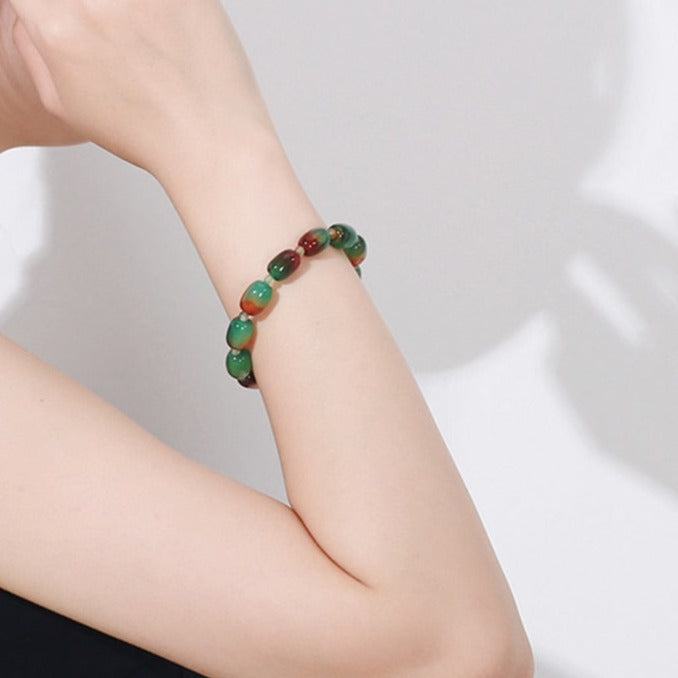Of rare natural beauty, citrine is a surprising stone, both for its appearance and for its virtues. Considered as a jewel, it belongs to the great family of quartz. Citrine owes its yellow to orange color to the presence of iron oxide particles. The stone belongs to the trigonal crystal system with a conchoidal break. Citrine has a vitreous luster.
Transparent stone, usually assumes a hexagonal prismatic shape with rhombohedral terminations. The hardness of the stone, quite high, is of the order of 7 on the Mohs scale and its density is 2.65.
It should be noted that the rarity of citrine, and the high demand for it, makes it one of the stones prone to counterfeiting. The most common process is to transform the most common quartzes such as amethyst. The purple color is then altered by thermal manipulation.
The most notable citrine deposits around the world are mainly found in Brazil, Uruguay, United States, Madagascar, Spain, Austria, Germany ...

History of the citrine
Despite being an extraordinary stone, the etymology of the word citrine, on the other hand, is not really surprising. The term derives from the Latin "citrus", a term commonly used to indicate lemon. The name citrine would therefore be a simple reference to the color of the stone.
Citrine has been known since ancient times among the great civilizations of the Mediterranean basin. The ancient Egyptians used citrine for medicinal purposes for thousands of years, mainly to remedy the bites of poisonous animals. Citrine has been attributed to Sekhmet, the lion-headed goddess. For the Greeks it was the stone of healing and wisdom. It is the attribute of Chiron, the good centaur teacher of Asclepius, Greco-Roman god of medicine. As for the Romans, they used citrine to make jewelry. They carved it in cabochon or intaglio (negative relief engraving).
Closer to our time, citrine has seduced the crowned heads of Europe since the 16th century and the Renaissance. History tells us that Emperor Charles V and Queen Victoria had a particular passion for citrine, to the point of setting precious royal objects with it.
Virtue of citrine
For modern lithotherapy, citrine is the most suitable stone for both soothing and toning the body and mind. On a physical level, citrine brings its benefits to the digestive system as a whole. It would help remedy the ailments that affect you, such as nausea, stomach acid, food poisoning and liver problems. Citrine also confers its virtues on the heart and blood circulation, kidneys and thyroid. The stone would greatly help strengthen the body and invigorate the energy flows that pass through it.
On a mental level, citrine has a positive influence that dissipates negative vibrations and purifies the mind, thus promoting concentration and meditation. A hot stone helps to achieve the serenity necessary for any exercise of intelligence and creativity. It would even be an instigator of luck and fortune for small professional or personal projects.
On a karmic level, citrine acts as a shield for the aura. Its faculties, which help to dissipate negative vibrations, are accompanied by purifying and energizing virtues for both the subtle and the physical body. Citrine acts on the crown chakra, which governs meditation and intuition.
A positive stone, it will bring calm and balance where discord and emotional excesses such as anger, phobias and other negative feelings reign.
To purify the citrine, lightly salted water should be enough to free the stone from the negative waves it may have absorbed. To recharge it, exposure to sunlight in a quartz or amethyst geode should ensure optimal recharging.









